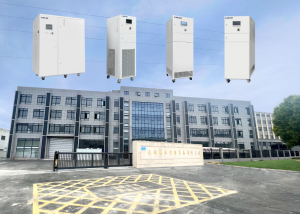Precautions for Leakage Inspection of Glycol Chiller
The main points about checking leakage of glycol chiller
During the operation of the glycol chiller, it is critical that the refrigeration system does not leak.

In order to avoid the leakage of refrigerant and other gases from the glycol chiller, the inspection of the welding quality is more important. First check whether the sealing performance of the weld is good. After adding refrigerant or nitrogen and allowing it to stabilize for a certain period of time, it can be tested with soapy water or other methods. When the refrigeration cycle is in operation, the welds should not be cracked due to vibration, the pipes should not be blocked by debris during welding, and should not enter moisture due to improper operation. When the refrigeration cycle is working, the surface of the welded parts should be clean and clean. No oil stains.
The common leakage points of glycol chillers are evaporator leakage, refrigeration cycle connection leakage, refrigeration cycle valve leakage, compressor pipeline leakage, capillary vibration wear, four-way reversing valve leakage, etc. Common inspections Leakage methods are commonly used in the production and maintenance of refrigeration cycles: visual leak detection, pressure leak detection, instrument leak detection, vacuum leak detection, etc. The user can solve the leakage points one by one.
The fault of leak detection of glycol chiller is relatively common. Therefore, when choosing, it is recommended to choose a fully closed loop piping system and valve parts to choose branded accessories. The evaporator uses a high-power plate heat exchanger, which is small in size, high in efficiency, fast in cooling, safe and reliable, and is used for rapid liquid cooling. It is widely used in petrochemical, medical, pharmaceutical, biochemical, freeze-drying, pharmaceutical, military and other high-tech industries.
Recommandations connexes
-
Cooling and heating thermostat for running electronic component testing
1083If enterprises want the cooling and heating thermostats for electronic component testing to operate for a long time without any faults, they need to achieve the following points to maintain stable equipment performance. 1. Suitable working enviro...
Voir les détails -
Les fabricants d'équipements à haute et basse température analysent les connaissances en matière de détendeurs.
1119Le détendeur est un accessoire important de la machine intégrée à haute et basse température. Le fabricant vous dit qu'il existe plusieurs types de détendeurs, et que les différents détendeurs présentent des différences. Le détendeur haute et ...
Voir les détails -
Quelles sont les industries auxquelles les refroidisseurs à basse température peuvent être utiles ?
954Maybe some of you don't know much about low temp chiller products. The low temp chiller is a kind of professional refrigeration equipment used in industrial production. In recent years, there has been a great demand for different types of low temp...
Voir les détails -
Instructions de préparation pour le test de puce dédié à la série TES-5
968La série TES-5 pour le test des puces est utilisée pour le test des composants électroniques. La détection précise de la puce est très importante. Que savez-vous donc de la préparation des tests de la série TES-5 pour les tests de puce ? Avant de commencer le test TES-5 s...
Voir les détails
 LNEYA Industrial Chillers Fabricant Fournisseur
LNEYA Industrial Chillers Fabricant Fournisseur













